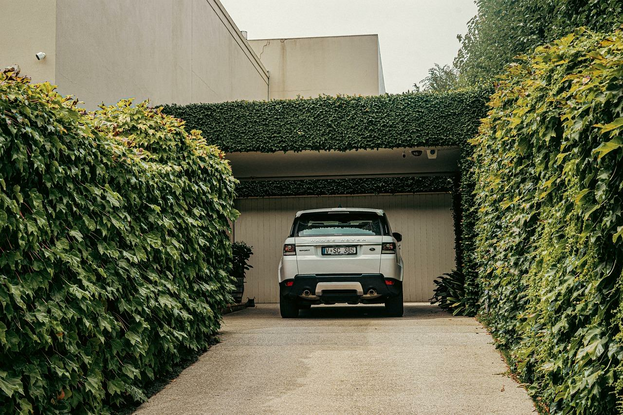
A benefit of using your home’s garage parking is that it keeps you safer, influenced by its ease of access. When it comes to getting to your car, a lockable garage that you access through the inside entrance of your house offers a safer atmosphere than your driveway.
Additionally, your garage can be your escape to pursue your hobbies. Whether your hobbies are crafting, painting, or building, a garage is the perfect space as it allows you to get out of your house but still remain in a sheltered, sound structure you can call your own.
“The CRAFTSMAN survey indicates that over 60% of Americans who own a garage believe it to be the least organised space in their home,” stated Tabata Gomez, Chief Marketing Officer of Tools and Outdoors for Stanley Black & Decker. “There are over 82 million garages in the U.S.”- You can find your ideal garage or modify the one you have by considering the following.
How Many and What Kind of Cars Need to Be Stored
Before making your choice, carefully consider the garage’s capacity to handle both types and quantities of vehicles. Many different sizes of garage packages are available to suit the quality, garage kits, and brands of vehicles you need to keep.
Whether you need to store a commercial fleet of vehicles and heavy equipment or a personal family automobile, your garage can fit it all, with various sizes available for straight-wall and arch-style buildings. Make sure there is enough area to work with and consider the possibilities of expanding later on as your demands alter when choosing your location.
Keep a safe distance from your home.
Although steel garages are meant to be standalone buildings, many individuals decide to locate them near their houses to make access easier. If you create a garage next to your house, ensure you have enough space to avoid interference with any vital pipes or wires. To guarantee the safety and security of the house and the garage, you may need to move it further away than you had initially intended. This, however, will be all down to the land you have available as well.
Location
Several alternatives regarding where a garage should be placed on a certain piece of land exist. The most common type is integrated into the house or linked with a passageway between the garage and the house. A detached garage is an additional option if space constraints or construction codes prevent this.
There are other benefits, such as motor noise and offensive exhaust odours being kept outside the house. The driveway is an essential component no matter what kind of garage is built.
Spending Plan
Regarding price, there are also several possibilities for building a garage. Solid construction costs much more than prefabricated garages composed of materials like steel, concrete, or wood. Naturally, having a prefabricated garage saves you the trouble and expense of building a garage from scratch. Still, their lifespan is often limited to twenty to thirty years, depending on what model you buy. In contrast, a sturdy garage is built to endure a lifetime. Setting a budget for this project is ideal. There are also options for weather-resisting garages and ones designed to last through storms. If you are in a highly storm-prone area, this may be a lifetime investment that will save you money in the long run.
Roof configuration
The roof is the last component to consider when designing your garage. A garage could have any roof, including pitched, mono-pitch (lean-to), and flat. The traditional garage roof design is the flat roof, which is exceptionally well-liked in areas with little snowfall. Consider the shape of the roof for future projects, as later down the line, you may want to add solar panels, and the shape of your garage comes into play with their effectiveness.
Additional Uses for Your Garage
Beyond vehicle storage and hobby space, your garage can serve various other purposes. Many homeowners convert their garages into home gyms with equipment and flooring designed to withstand heavy use. Others may use their garage as a home office, providing a quiet and separate space from the main living areas. You could also transform your garage into a game room or an entertainment area, creating a fun and unique space for family and friends to gather. The versatility of a garage makes it a valuable addition to any home, accommodating your evolving lifestyle needs.
Environmental Considerations
Incorporating eco-friendly elements into your garage design can benefit the environment and utility bills. Installing solar panels on the roof, using energy-efficient lighting, and opting for sustainable building materials are all ways to make your garage greener. Moreover, adding insulation can help regulate temperature, making the space more comfortable year-round and reducing energy consumption. By thinking green, you create a more sustainable home and increase its resale value.
Conclusion
Your garage can be more than just a place to park your car! Consider safety, car storage needs, location (attached or detached), budget (prefab vs built), and even roof style (flat for low snowfall) to find your perfect fit. You want to make sure that the garage also fits in with the aesthetic of your house as you don’t want it to look out of place and an eye sore on your property, as a garage has the potential to elevate your property appeal when you come to sell it in the future.
With careful planning, you can turn your garage into a safe, functional space that meets all your needs. Happy garaging!
For more tips on home improvement and finding the perfect property features, check out The House Shop’s property blog, which offers more comprehensive guides.




 POSTED BY
POSTED BY 

